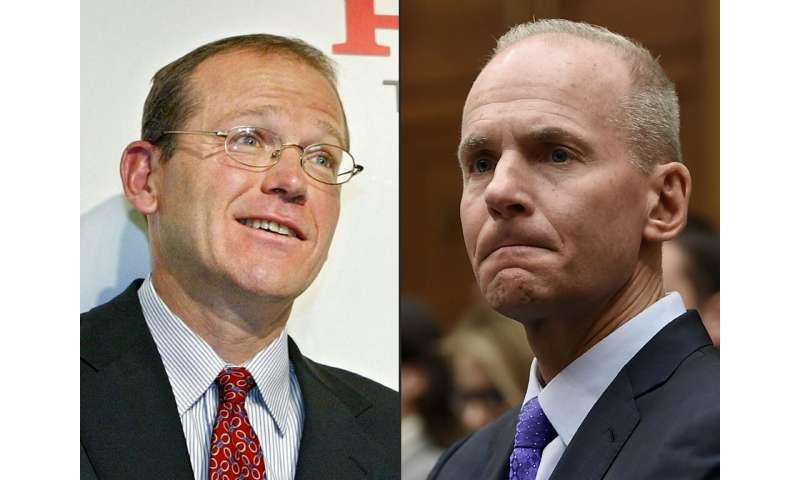What links 2019’s wave of global protests?
The year 2019 seemed to be full of protests, but why were there so many happening all over the world?
The BBC’s population correspondent Stephanie Hegarty, who has been looking at how these movements spread online, found a digitally connected group of young people sharing tactics, slogans and words of support.
BY RACHAEL D'AMORE GLOBAL NEWS
Posted December 26, 2019 5:00 am
WATCH: The rise of protests around the world, explained
There is no doubt that streets around the world were flooded with discontent in 2019.
In Bolivia, thousands protested after claims of election fraud led to the ousting of the country’s president. In Chile, a proposed subway fare hike unravelled into a cross-country demand for income equality. In Egypt, rare protests were held in big cities over allegations that top officials used public funds for personal gain. In Canada, protests erupted over the approved expansion of the Trans Mountain oil pipeline. In Hong Kong, a proposed extradition law turned to wider calls for democracy, drawing millions over a seven-month period.
And that’s just to name a few of the protests that took place this year
READ MORE: Protests from Hong Kong to Chile highlight global frustrations
2019 might strike some as a banner year, says Roberta Lexier from Mount Royal University, but there are critical parts of history in which protests and large social movements made waves.
The year 1968 was one of them, she says.
“1968 was massive. It was all over the world, all over different societies,” Lexier said. “It built a sort of momentum that spread, leading to a global protest moment.”
Some of the estimated 300 students at Columbia University who gathered around Hamilton Hall on the school’s campus in New York on April 24, 1968. More than 700 protesters were arrested and more than 130 were injured when police retook the occupied buildings during what was part of a year of global turmoil.
Some of the estimated 300 students at Columbia University who gathered around Hamilton Hall on the school’s campus in New York on April 24, 1968. More than 700 protesters were arrested and more than 130 were injured when police retook the occupied buildings during what was part of a year of global turmoil. (AP Photo/Jacob Harris, File)
Political and cultural resentments flared in 1968. Unlike previous periods of upheaval, the scope of the discontent was seen and felt on a global scale — with much of it fuelled by young people.
There was common ground for protesters across borders with race, war and free speech being key issues.
In France, frustrated youth rallied against capitalism and long-standing traditional values and institutions. In the United States, as opposition to the Vietnam War grew and economic issues proliferated, Americans staged demonstrations from Los Angeles to Detroit. In Chicago, specifically, an unprecedented riot unfolded at the Democratic National Convention. In Mexico, a student-led movement demanding greater freedom and democracy was met with a massacre.
Protests also emerged in Italy, Germany, Czechoslovakia and Japan in what was often described as the “year of revolt.”
How does 2019 stack up to 1968 and the rest of history? It’s difficult to say definitively, Lexier says. What makes these years hard to compare is a difference in technology.
“Social media and access to information have changed things in a way we didn’t have before,” she said. “Social media may be distorting how we might compare to other protest moments.”
The use of social media as a tool to stimulate support for a social movement isn’t new. When pro-democracy uprisings rippled across the Middle East and North Africa in 2011, known as the Arab Spring, protesters used the rise of social media platforms as an opportunity to co-ordinate and tell the world their story.
The revolution became a force online, with many watching from afar. It has influenced movements ever since, and 2019 is no different.
Hong Kong pro-democracy protests enter seventh month
In Hong Kong this year — just as in the 2014 Umbrella Movement — protesters have used social media to spread information, mobilize efforts and avoid authorities. By showing the world their injuries inflicted by police, the Hong Kong protesters of 2019 are also vying for international support.
Social media is where the violent realities of protests are revealed. Deaths have been reported in protests around the world this year.
But was 2019’s rash of protests more violent than the past? Lexier isn’t sure.
“The difference now is our unfiltered, instantaneous access to it.
“In the 1950s, when civil rights activists were being attacked by police dogs and water hoses, people were seeing that live on the news and we able to say, ‘OK, wait a minute, what are we doing?'” Lexier said. “That kind of television helped advance the movement, but it had to be filtered through the news. It came to Americans on a delayed basis. Whereas now, if the military attacks a protest, we’re often seeing it live. It’s not distorted or edited. This is especially important in places where the government or state has control over the media or the messaging.”
It reduces the “‘information asymmetry’ between protesters and police,” as one Dutch researcher put it.
The ease of access to information also helps influence and organize other movements, says Ron Stagg, a history professor at Ryerson University, and those tactics were in full force this year.
“Protests can feed off each other. People can be worked up because of what they see,” he said. “It makes it easier. For organization, you don’t need a central organization directing things. If you think of the civil rights movement, where you had the Southern Christian Leadership Conference controlling a lot of what went on, nowadays, you don’t need that.”
The climate change movement is an example. The drive of a 16-year-old went from a lone protest outside the Swedish parliament to a worldwide strike effort known as #FridaysforFuture. While Greta Thunberg is by no means the first person to push for climate crisis recognition, her movement spiked in 2019, with students at its core.
Canadians across the country joined in on the movement, staging demonstrations at major landmarks and roadways in the fall.
“It started with one person and built into this massive global movement. The issue is connecting us globally,” said Lexier. “And climate change and economic austerity are connected in very clear ways.”
Economic inequality is a driving force behind many of the movements this year. Government corruption and inaction play a role as well.
While each of the protests movements seen in 2019 has its own core concerns, there are things that bind them together.
To Lexier, those things are austerity and economic inequality. She says Chile is a perfect example of this.
“While increasing transit fares might seem like a small issue to spark a massive national protest, it’s just the symbol of a larger problem. You’re seeing the economic divide really grow,” she said.
“The pushback is against the austerity agenda and toward a different economic model.”
While 2019 will surely be considered a standout year, there’s also a chance that the single year will bloom into a full period in history, Stagg says.
In the past, social movements that exploded did so over a period of time, sometimes decades. This time around, in 2019, things seem concentrated, he says.
“There have been other years where there were a lot of protests, but it’s the geographic scope this year that stands out,” Stagg said. “Starting in 1848, you had a period of revolutions and a number of European countries trying to overthrow autocratic governments. You had a period from the 1950s through to the mid-’70s where there were a lot of protests for different reasons, but not necessarily a single year.”
“It’s been one big year and it may continue,” he added.
“We’ve got the same conditions that we have this year heading into next year — social media, frustrated people.”
© 2019 Global News, a division of Corus Entertainment Inc.











